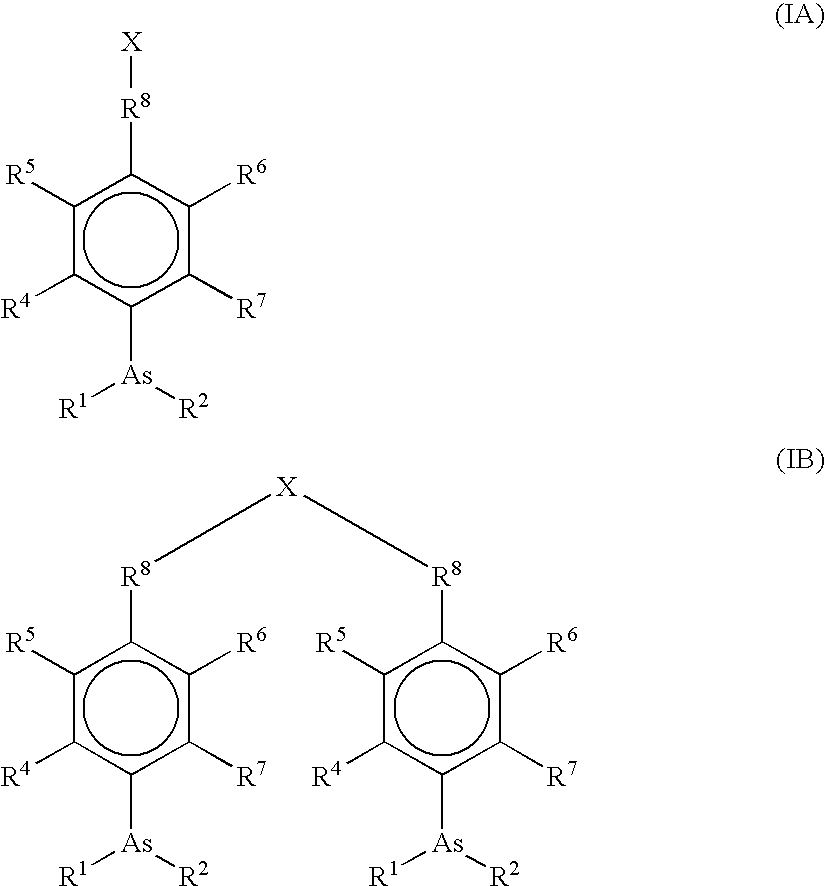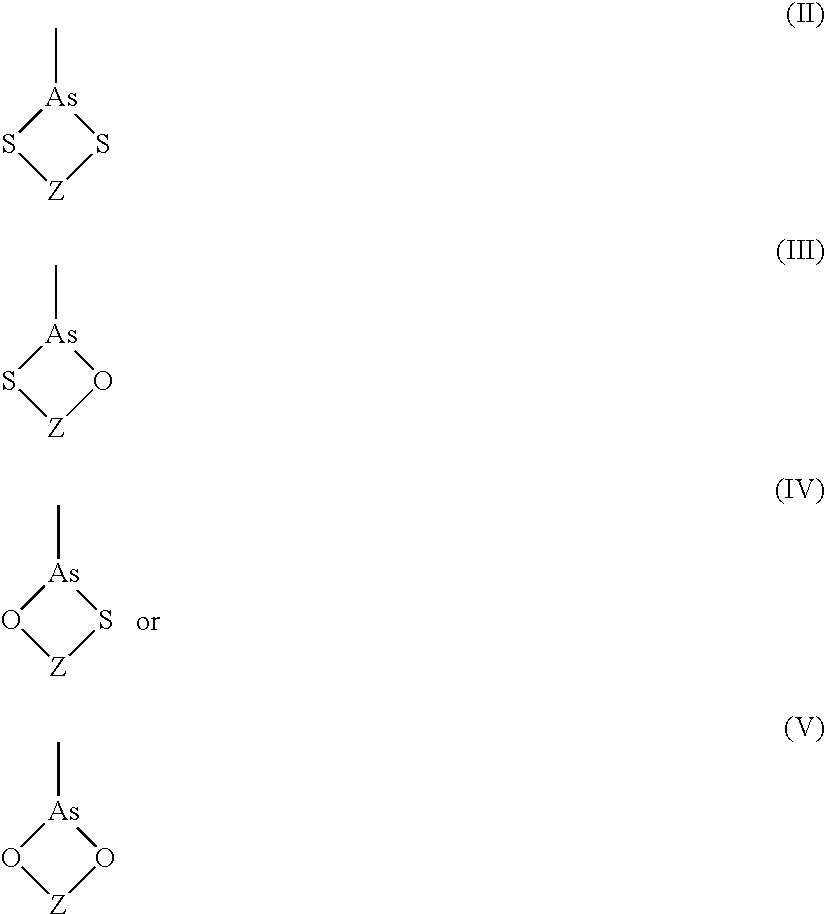Ultra-high specificity fluorescent labeling
a fluorescent labeling and ultra-high specificity technology, applied in the field of compositions and methods for labeling molecules, can solve the problems of site-specific labeling, inability to label and analyze, and difficulty in site specific labeling, so as to reduce undesirable background noise and accurately measure the target material
- Summary
- Abstract
- Description
- Claims
- Application Information
AI Technical Summary
Benefits of technology
Problems solved by technology
Method used
Image
Examples
example 1
Synthesis of a (Ni2+-NTA)1-Cy3 Transition Metal Probe
A. Preparation of (NTA)1-Cy3
[0221] N-(5-amino-1-carboxypentyl)iminodiacetic acid (Dojindo; 26 mg; 80 μmol) was dissolved in 1.6 ml 0.1M sodium carbonate and was added to Cy3 mono-succinimidyl-ester (“Cy3 Mono-Reactive Dye” from Amersham-Pharmacia Biotech; 800 nmol). Following reaction for 1 hour (with vortexing at 15-min intervals) at 25° C. in the dark, the product was purified from excess N-(5-amino-1-carboxypentyl)iminodiacetic acid using a Sep-Pak C18 cartridge (Millipore; pre-washed with 10 ml of acetonitrile and 10 ml water, washed with 20 ml water; eluted with 1 ml 60% methanol), dried, re-dissolved in 500 μl water, and further purified by FlAsH chromatography [silica gel, NH4OH:ethanol:water in a 55:35:10 v / v / v TLCrf=0.6]. The product was dried, redissolved in 2 ml water, and quantified spectrophotometrically (ε550=150,000M−1cm−1). Yield 130 nmol, 16%.
B. Preparation of (Ni2+:NTA)1-Cy3
[0222] NiCl2 (Aldrich; 350 nmol i...
example 2
Synthesis of a (Ni2+-NTA)1-Cy5 Transition Metal Probe
A. Synthesis of (NTA)1-Cy5
[0223] N-(5-amino-1-carboxypentyl)iminodiacetic acid (Dojindo; 26 mg; 80 μmol) was dissolved in 800 μl 0.1M sodium carbonate and was added to Cy5 mono-succinimidyl-ester (“Cy5 Mono-Reactive Dye” from Amersham-Pharmacia Biotech; 800 mmol). Following reaction for 1 h (with vortexing at 15-min intervals) at 25° C. in the dark, the product was purified from excess N-(5-amino-1-carboxypentyl)iminodiacetic acid using a Sep-Pak C18 cartridge (Millipore; procedure as above), dried, re-dissolved in 500 μl water, and further purified by FlAsH chromatography (silica gel; ethanol TLC rf=0.2). The product was dried, re-dissolved in 100 μl water and quantified spectrophotometrically (ε550=250,000M−1cm−1). Yield: 77 nmol; 9.6%. ES-MS: m / e 896.7 (calculated 896.3).
B. Synthesis of (Ni2+:NTA)1-Cy5
[0224] NiCl2 (Aldrich; 50 nmol in 0.5 μl of 0.01 N HCl) was added to (NTA)1-Cy5 (30 nmol in 1 ml water), and the solution ...
example 3
Synthesis of a (Ni2+-NTA)1-Cy3 Transition Metal Probe
A. Synthesis of (NTA)2-Cy3
[0225] N-(5-amino-1-carboxypentyl)iminodiacetic acid (Dojindo; 26 mg, 80 μmol) was dissolved in 1.6 ml 0.1 M sodium carbonate and was added to Cy3 bis-succinimidyl-ester (“Cy3 Reactive Dye” from Amersham-Pharmacia Biotech). Following reaction for 1 hour (with vortexing at 15-min intervals) at 25° C. in the dark, products were purified from excess N-(5-amino-1-carboxypentyl)iminodiacetic acid using a Sep-Pak C18 cartridge ((Millipore; pre-washed with 10 ml of acetonitrile and 10 ml water; washed with 20 ml water; eluted with 1 ml 60% methanol), dried, re-dissolved in 200 μl methanol, and purified by preparative TLC [1000 Å silica gel (Analtech); NH4OH:ethanol:water 55:35:10 v / v / v]. Three bands were resolved, corresponding to (NTA)2-Cy3 (rf=0.2), (NTA)1-Cy3 mono acid (rf=0.5), and (NTA)2-Cy3 bis acid (rf=0.8). (NTA)2-Cy3 was eluted using 60% methanol, dried, re-dissolved in 2 ml water and quantified spec...
PUM
| Property | Measurement | Unit |
|---|---|---|
| Electric charge | aaaaa | aaaaa |
| Nanoscale particle size | aaaaa | aaaaa |
| Nanoscale particle size | aaaaa | aaaaa |
Abstract
Description
Claims
Application Information
 Login to View More
Login to View More - R&D
- Intellectual Property
- Life Sciences
- Materials
- Tech Scout
- Unparalleled Data Quality
- Higher Quality Content
- 60% Fewer Hallucinations
Browse by: Latest US Patents, China's latest patents, Technical Efficacy Thesaurus, Application Domain, Technology Topic, Popular Technical Reports.
© 2025 PatSnap. All rights reserved.Legal|Privacy policy|Modern Slavery Act Transparency Statement|Sitemap|About US| Contact US: help@patsnap.com



